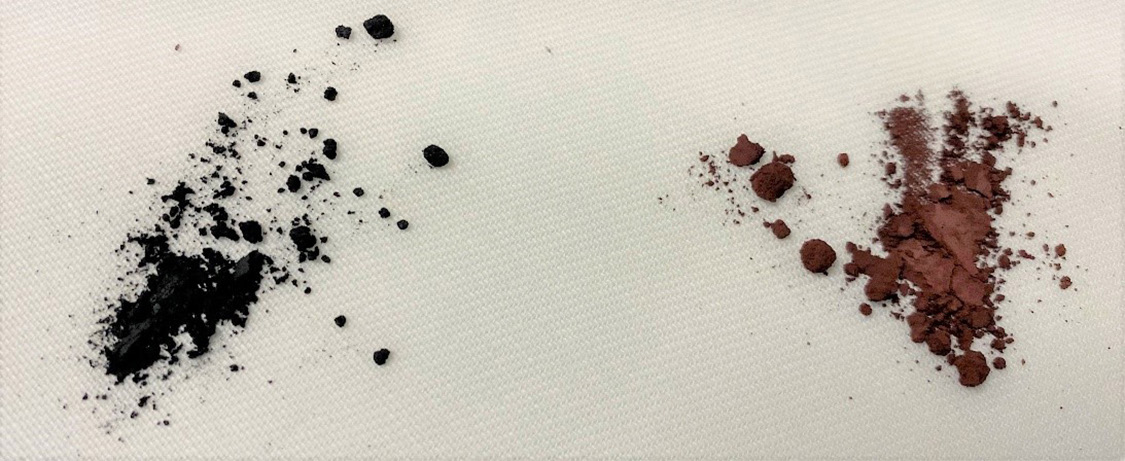Identification of Unknown Powders
Home » Identification of Unknown Powders
Unknown contaminants such as powders, particles and residues can cause issues in various manufacturing processes. In order to determine the composition of unknown materials, it is often useful to employ several analytical techniques.
This paper describes identification of two unknown powders using Raman spectroscopy, combined with two X-ray techniques: X-ray fluorescence spectroscopy (XRF), and X-ray diffraction (XRD). Whereas Raman uses vibrational spectroscopy to determine the bonding environments in organic and inorganic compounds, XRF provides elemental composition. XRD can be utilized to determine phase identification and quantification of crystalline materials based on their unique crystal structure.

ANALYSIS
The two powders of interest in this had a red and black appearance (see Figure 1) and are referred to as Red and Black samples.
Raman spectroscopy is an excellent choice for analyzing unknown powders because it can determine the composition of many inorganic species and is particularly sensitive to iron-based compounds. It is also very applicable to samples that are very black in appearance and may contain large amounts of non-organic carbon. Furthermore, Raman’s small spot size makes it possible to detect rust from particles on the order of a few microns in size.
Would you like to learn more about Identification of Unknown Powders?
Contact us today for your identification of unknown powder needs. Please complete the form below to have an EAG expert contact you.